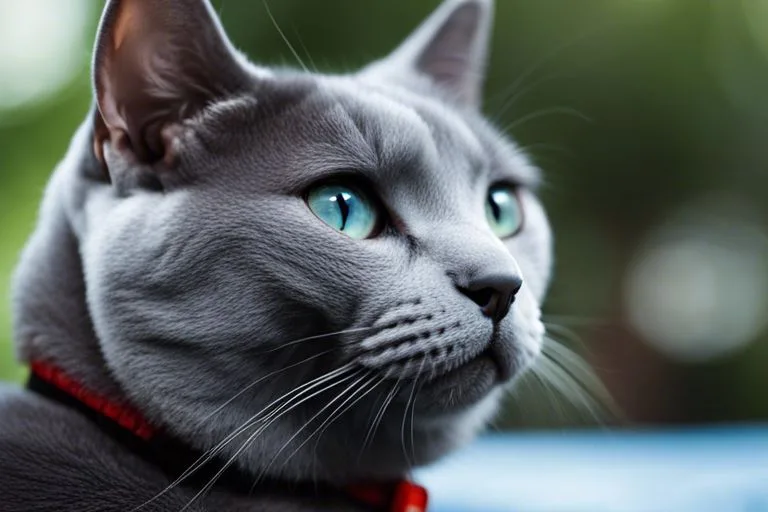Periodontal disease can have a significant impact on your Russian Blue cat’s overall health. It is important to understand the potential dangers that gum disease can pose to your feline friend. If left untreated, this condition can lead to serious health complications and discomfort for your pet. In this blog post, we will explore the potential effects of teeth gum disease on Russian Blue cats and provide you with tips on how to prevent and treat this common dental issue. By taking proactive measures, you can help ensure the well-being of your beloved Russian Blue cat.
Key Takeaways:
- Tooth and gum disease can affect Russian Blue cats just like any other breed. Without proper dental care, Russian Blue cats can develop dental issues such as plaque buildup, gingivitis, and periodontal disease.
- Dental care is crucial for maintaining the overall health of Russian Blue cats. Regular brushing, dental check-ups, and a balanced diet can help prevent tooth and gum disease in Russian Blue cats.
- Untreated dental issues can lead to serious health problems in Russian Blue cats. In severe cases, tooth and gum disease can cause bacterial infections, organ damage, and compromised immune system in Russian Blue cats.
Understanding Teeth Gum Disease
One of the most common dental issues in Russian Blue cats is teeth gum disease. This condition can have a significant impact on your cat’s overall health and well-being. In order to prevent and treat this problem, it’s important to understand the underlying causes and symptoms. Development of dental hygiene gum for cats considering their oral ecosystems
Definition and Causes
Teeth gum disease, also known as periodontal disease, is an inflammatory condition that affects the gums and surrounding tissues of the teeth. It is primarily caused by the accumulation of plaque and tartar on the teeth, leading to bacterial infection. The bacteria produce toxins that can damage the gum tissue, leading to inflammation and potential tooth loss if left untreated. Other factors such as genetics, diet, and overall health can also contribute to the development of gum disease in Russian Blue cats.
Common Symptoms and Diagnosis
Early signs of teeth gum disease in Russian Blue cats may include bad breath, red or swollen gums, and difficulty chewing. As the condition progresses, you may notice bleeding gums, loose teeth, and even changes in your cat’s eating habits. Your veterinarian can diagnose gum disease through a dental examination, which may include X-rays to assess the extent of the damage. It is important to address these symptoms promptly, as untreated gum disease can lead to more serious health issues such as bacterial infections and systemic inflammation.
Impact of Gum Disease on Russian Blue Cats
Clearly, gum disease can have a significant impact on the overall health and well-being of your Russian Blue cat. Just like humans, cats are also susceptible to dental issues, including feline gingivitis. This condition can lead to discomfort, pain, and potentially serious health complications if left untreated. To learn more about feline gingivitis, its causes, symptoms, and treatment options, you can visit Feline Gingivitis: Causes, Symptoms, & Treatment 2023.
Specific Vulnerabilities
Russian Blue cats, like many other breeds, are particularly vulnerable to gum disease due to their genetic predisposition. Their compact, wedge-shaped heads can also contribute to dental issues, as the shape may lead to overcrowding of teeth, making it easier for plaque and tartar to build up. Additionally, their sensitive nature may make them more prone to stress, which can affect their oral health. It’s essential to be vigilant and proactive in monitoring and addressing any signs of gum disease in your Russian Blue cat.
Long-term Health Implications
If left untreated, gum disease can have severe long-term implications for your Russian Blue cat’s health. Untreated feline gingivitis can lead to infections, tooth loss, and even damage to the jawbone. The inflammation associated with gum disease can also spread to other organs, potentially affecting your cat’s overall health. It’s crucial to prioritize regular dental care and prompt treatment to minimize the risk of these serious consequences.
By being aware of the specific vulnerabilities that Russian Blue cats may have to gum disease and understanding the potential long-term health implications, you can take proactive steps to safeguard your cat’s oral health. Regular dental check-ups, proper oral hygiene, and prompt attention to any signs of gum disease are crucial in ensuring the well-being of your beloved Russian Blue cat. Remember, the health of your cat’s teeth and gums is essential for their overall quality of life.
Prevention and Treatment
After learning about the potential effects of gum disease on Russian Blue cats, you may be wondering how you can prevent it. The good news is that there are steps you can take to ensure that your cat maintains good oral health. Regular dental care is crucial for preventing gum disease in Russian Blue cats. How Often Should You Brush A Russian Blue Cat’s Teeth?
Oral Hygiene Practices
Regular brushing of your Russian Blue cat’s teeth is one of the most effective ways to prevent gum disease. You should aim to brush your cat’s teeth at least 2-3 times a week to remove plaque and prevent tartar buildup. Additionally, providing dental treats or toys can help promote good oral hygiene and reduce the risk of gum disease.
Professional Care and Interventions
If you suspect that your Russian Blue cat may be suffering from gum disease, it’s crucial to seek professional care and interventions. Your veterinarian can perform a thorough dental examination and recommend a treatment plan tailored to your cat’s specific needs. This may include professional dental cleanings, antibiotics, or other interventions to address the gum disease and prevent further complications.
How Does Teeth Gum Disease Affect Russian Blue Cats?
Ultimately, it is important to understand that teeth gum disease can have serious consequences for your Russian Blue cat. It can lead to pain, difficulty eating, and even tooth loss. Additionally, the bacteria from gum disease can spread to other parts of the body, leading to more serious health issues. As a responsible pet owner, it is crucial to monitor your cat’s dental health and take preventative measures to ensure their overall well-being. This includes regular teeth cleanings and check-ups with your veterinarian, as well as providing dental-friendly toys and treats to help maintain their oral hygiene. By prioritizing your Russian Blue cat’s dental care, you can help prevent the harmful effects of gum disease and keep them happy and healthy for years to come.
FAQ
Q: What is teeth gum disease and how does it affect Russian Blue cats?
A: Teeth gum disease, also known as periodontal disease, is a condition that affects the gums and underlying bone that support the teeth. In Russian Blue cats, it can lead to bad breath, tooth loss, and overall discomfort.
Q: What are the symptoms of teeth gum disease in Russian Blue cats?
A: Symptoms of teeth gum disease in Russian Blue cats include bad breath, swollen or bleeding gums, difficulty eating, loose or missing teeth, and drooling. If you notice any of these symptoms, it’s important to seek veterinary care.
Q: What causes teeth gum disease in Russian Blue cats?
A: The main cause of teeth gum disease in Russian Blue cats is the build-up of plaque and tartar on the teeth, which can lead to inflammation of the gums. Other risk factors include genetics, diet, and overall oral hygiene.
Q: How can teeth gum disease be prevented in Russian Blue cats?
A: Preventing teeth gum disease in Russian Blue cats involves regular dental care, including brushing their teeth, providing dental treats and toys, and regular veterinary check-ups. A healthy diet and avoiding feeding them human food can also help prevent teeth gum disease.
Q: How is teeth gum disease treated in Russian Blue cats?
A: Treatment for teeth gum disease in Russian Blue cats may involve professional dental cleaning, antibiotics, and in severe cases, tooth extraction. Your veterinarian will create a treatment plan based on the severity of the disease.



